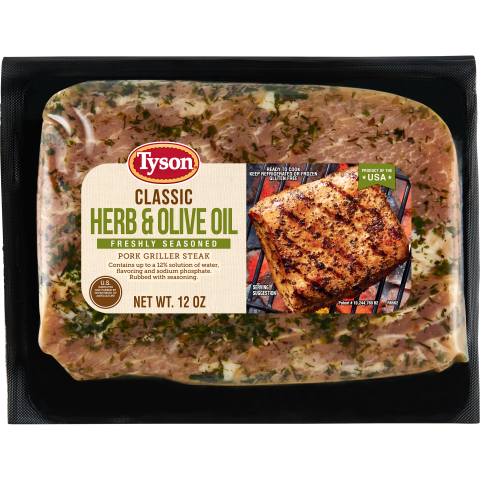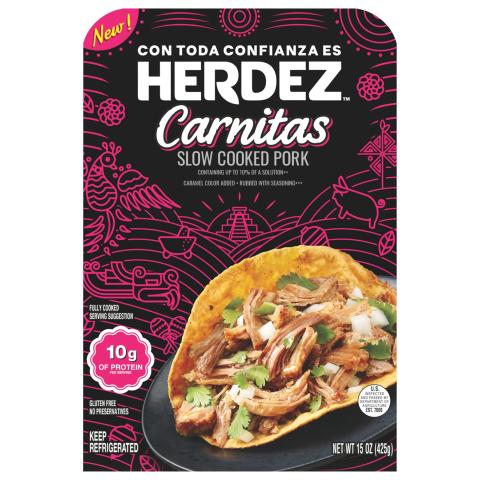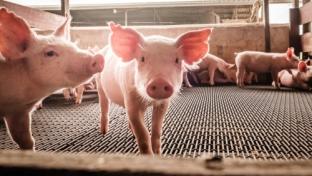Emerging Trends in Pork, Sausage, Ham and Bacon

It was called “The Other White Meat” for a while, thanks to a prolific industry ad campaign, but pork in all of its forms has come back into its own. Producers of fresh pork and pork-based products, including sausage, bacon and ham, are leaning into the attributes that make this protein the third most-consumed meat behind chicken and beef.
Flavor is a top characteristic of pork, along with variety and nutrition, agrees Tuffy Stone, a Chairman’s Reserve Meats pitmaster for Springdale, Ark.-based Tyson Foods. “One of the biggest reasons I love cooking with pork is because it’s so versatile,” says Stone. “I can barbecue ribs and shoulders, or I can grill, roast or sauté a pork loin or tenderloin. I also appreciate that pork can be seasoned using an array of different ingredients or flavors, from fresh herbs to dried spices.”
[Read more: "EXCLUSIVE: How the Meat Industry Is Catching Up to Change"]
Consumers continue to flock to the meat case and purchase animal-based proteins like pork, even as they have made some adjustments amid ongoing inflation and the advent of plant-based competitors. Americans ate 115 pounds of poultry last year, 59 pounds of beef and, not far behind, 51 pounds of pork, according to the U.S. Department of Agriculture.
Retail sales of fresh pork alone topped $7.1 billion last year, according to data from Statista. Within fresh pork, pork loin remains the top seller, with a 49.67% share of the category. Ribs and pork shoulder cuts follow, at 28.08% and 13.79%, respectively. Although ground pork is on the lower end of cut consumption, that product can appeal to today’s price-minded consumers.
As with other meats, pork prices remain elevated but are coming down a bit from 2022 highs. The Pork Checkoff, for example, reported that pork tenderloin prices were 26% lower in late May 2023 than in the prior year.
According to Emma Pierce, brand manager for Merriam, Kan.based Seaboard Foods, the company's value-added pork under the Prairie Fresh brand align with parallel shopper demands for price and eating experience. "As consumers continue to navigate economic stress and inflation, finding high-value products in the grocery store is more crucial than ever. With the current per-pound price, pork provides exceptional value to consumers, as well as culinary versatility via a variety of cuts, added flavors and countless preparations," she said.
More Choice Than Before
Although fresh pork is a mature segment, retail meat buyers have more choices today as brands break through traditional commodity-style formats. As an example, Tyson recently added a bone-in pork tomahawk chop and bone-in pork chop to its Chairman’s Reserve line that launched last year.
“The demand for case-ready products isn’t slowing down,” notes Rikki Ingram, director of fresh meats marketing at Tyson, citing additional offerings. “Other innovative products include the Tyson Pork Griller Steak, which is a cut that is disrupting the category with its unique shape and tender eating experience, and a ground beef-and-pork blend, a great economical and alternative ground option.”
Earlier this year Seaboard Foods debuted a line of Prairie Fresh USA Prime, including premium pork loin back ribs. These products undergo a three-step evaluation process that uses proprietary technology to measure and sort top-tier cuts for tenderness, marbling and color attributes.
“Prairie Fresh USA Prime is as close as we have come to pork perfection,” asserts Pat Watkins, VP, retail sales. “We are excited to introduce this one-of-a-kind premium line of pork to meat buyers and share how we manage every step in our process and are bringing something truly unique to meet consumer demand.”
Breed-based pork, such as Berkshire, Kurobuta, Iberico and Duroc, can differentiate a retail meat department with higher-end options akin to heritage lines of beef. Snake River Farms, a division of Boise, Idaho-based Agri-Beef, sells an American Kurobuta rack of pork and porchetta roast, among other cuts. Boone, Iowa-based Fareway Meat Market, part of the Fareway chain in the Midwest, offers a Duroc Tomahawk pork chop for $15.99-$17.99 per pound and a Duroc Iowa pork chop starting at $14.99 per pound.
Taking a cue from restaurant menus, more grocers are carrying fresh pork belly. As consumers get more familiar with dishes like burnt ends and pork belly tacos, they’re open to trying those dishes at home. Austin, Texas-based Whole Foods Market, for its part, sells pork belly for a competitive $6.99 per pound.
Speaking of burnt ends, heat-and-eat barbecue meals often feature pork as a central ingredient. When Dallas-based foodservice chain Dickey’s Barbecue Pit ventured into the retail sector at Walmart stores, the brand included a pulled-pork product. For its part, Niman Ranch, based in Westminster, Colo., recently updated its fully cooked applewood-smoked pulled pork, which is now comes in a compostable container.
In the heat-and-eat arena, Latin-inspired pork offerings appeal to shoppers seeking convenience and authenticity. As an example of this, the Herdez brand, from Austin, Minn.-based Hormel Foods, has rolled out a line of refrigerated entrées such as slow-cooked pork carnitas.

Sausage, Bacon and Ham
New products and players are also entering the categories of sausage, bacon and ham, including the fresh and ready-to-eat segments.
Fresh pork sausage continues to hold its own, with artisan and mainstream brands offering a range of flavors and forms. Carlstadt, N.J.-based Schweid & Sons recently added a new line of fresh pork breakfast sausage in original, Italian and apple varieties made from humanely raised U.S. pork.
Ready-to-eat varieties of sausage span traditional products like summer sausage and salami, along with newer items that appeal to shoppers who are building charcuterie boards, seeking authentic flavors or just looking for something different. For example, Hormel recently came out with a new sliced chorizo product.
Bacon is another stalwart category that finds room for newer items as brands capitalize on the product’s perennial crave factor. Tyson, which is currently building a new bacon facility in Kentucky, is introducing more products under its brands, like a chopped bacon from Jimmy Dean and a steak-cut bacon from Wright Brand. Meanwhile, Seaboard Foods’ new applewood-smoked and hickory-smoked bacon varieties are made with fresh bellies from the Prairie Fresh USA Prime line.
In addition to traditional pork belly bacon, grocers can opt for beef bacon. Brandt Beef, part of the Brawley, Calif.-based One World Beef organization, offers a fresh beef bacon product as part of its broad portfolio.
Ham is another other mature category under the larger pork umbrella. Whole-ham sales typically spike during winter and spring holidays such as Christmas and Easter, while deli ham products remain grocery staples. Philadelphia’s venerable Dietz & Watson brand recently added a new uncured cherrywood-smoked ham to its lineup, with whole-muscle cuts sourced from family farms.
Finally, as consumers grew accustomed to food deliveries during the pandemic, retailers began offering bundles that included fresh and processed pork. The direct-to-consumer brand ButcherBox, for example, recently launched for the first time at a major retailer. The company teamed up with Marlborough, Mass.-based BJ’S Wholesale Club to offer The Grill Box, which includes frozen grass-fed, grass-finished ribeye steaks, burgers and steak tips, as well as crate-free humanely raised pork chops and Italian pork sausage links, for $99.
“Our launch in BJ’s is helping us reach a new target customer, one we know is focused on quality and value, but may be hesitant to shop online for their groceries,” said Mike Salguero, founder and CEO of Boston-based ButcherBox.





